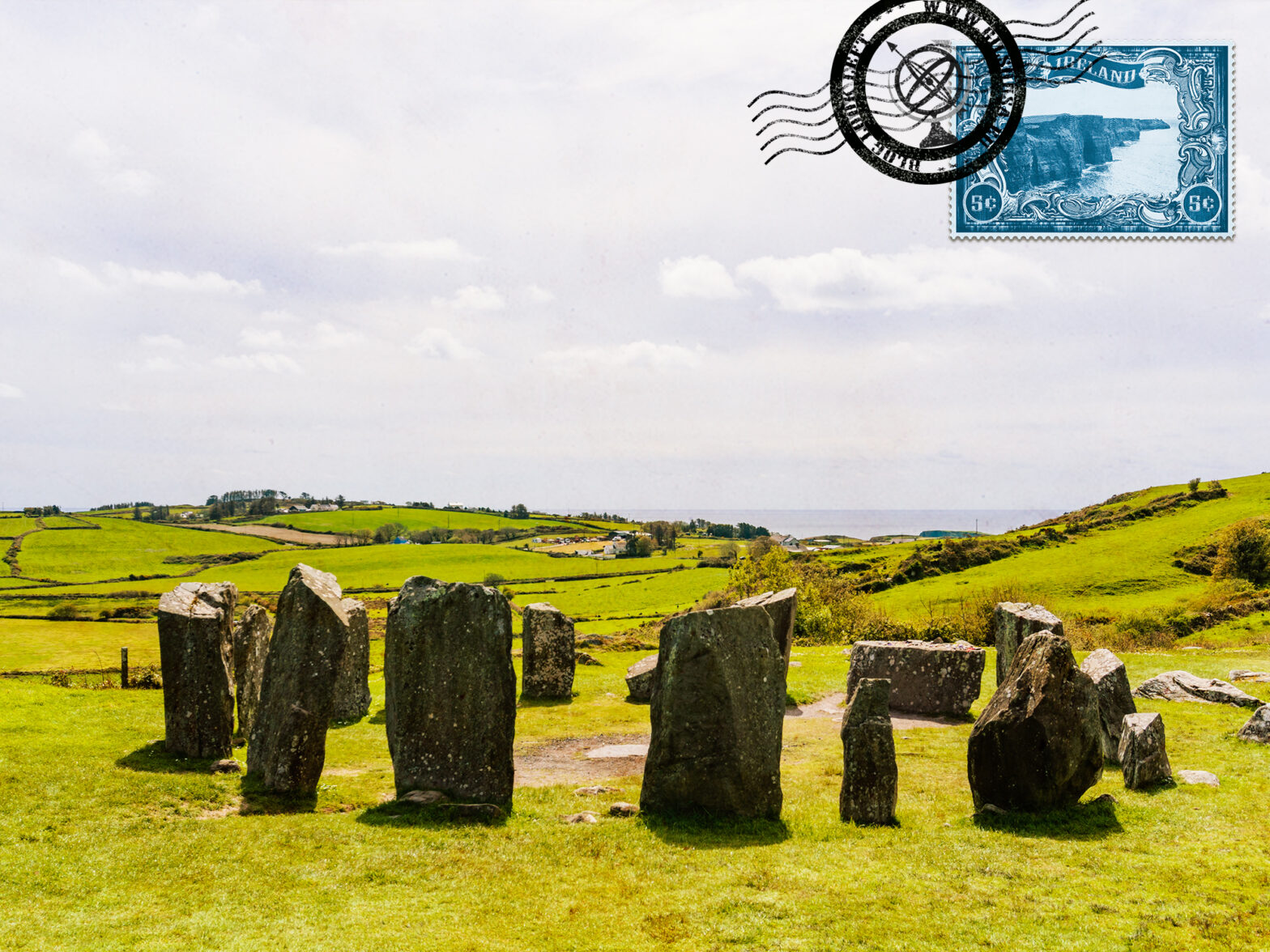For those who visit Cork and have the chance to rent a car, exploring a bit more of the country side is something I highly recommend. Not too far from Cork there is a Megalith Stone Circle with a stunning view, the Drombeg Circle. With clear skies you can take gorgeous photos from the circle until the sea.
The stone circle Drombeg is one of the most visited megalith sites in Ireland, and it lies about one hour by car south of Cork. I already visited this place countless times, each time I have a friend visiting I end up taking them there. Just the trip itself is totally worth it, and the visit to the site as well. Only thing that we have no control over is the weather, which can spoil the experience a bit. In fact, the first time I visited this site the weather was horrible, not the best first impression.
Regarding the conservation state of this site, it is obviously a protected area. However doesn’t have much surveillance, in the past people even stole some stones… The entrance is free, but the road to get there isn’t the best, there is a clear indication on the way, but it can easily be overlooked. However, of course I recommend a visit if you have the time and you enjoy historical sites.

This place is part of a route I wrote of places to visit in the South of Ireland, and it is also part of the Wild Atlantic Way. For those who want to discover a bit more, you have excellent excuses to pass via Drombeg and explore the surroundings as well, and why not spending a night in the gorgeous town of Rosscarbery?
Characteristics and curiosities about the Stone Circle
The circle consists of 17 stones forming a diameter of 9,3 meters, however out of those 17 stones there are only 13 left. The most western stone has a length of 1,9 meters, and it has 2 egg-shaped marks, circled by a ring. The circle has the designation of “Cork-Kerry type”, with one entrance of two stones of 1,8 meters, a southwest axis aligning the monument towards the winter solstice sunset. It is incredible how they could build these structures with such astronomical accuracy.
The circle’s stones were laid towards the recumbent stone, which center was aligned with the winter solstice’s sunset, on the distant hills. However, even though the alignment is really good, it isn’t precise.
In another side of the complex there were found ruins of two stone circular huts and a kind of a kitchen, in Irish it is named as fulacht fiadh. There were found traces that suggest that it was a kind of a kitchen used until the V century. The biggest hut had a timber ceiling, supported by a pillar, also made of wood. The smaller hut had a kind of an oven. There is a bridge that connects the huts to the kitchen area (fulacht fiadh), with a fireplace, a well and a hole where the water would be boiled using hot stones.
Excavations
After a few typographic studies in the beginning of XIX century, the site was excavated and restored in 1957. Using a radiocarbon dating method, they estimated that the site was active between the years 1100 and 800 BC. It was also found a pot with ashes from a young person, covered with a thick piece of cloth. The pot was burried in the middle of the circle with other artifacts, and with several shards.
Where is the Drombeg Circle?
The Drombeg Circle is located about one hour away from Cork, right after Rosscarbery town. The place is in a quite rural secondary road, which easily will make you think you’re lost. But in this case, you really must trust your GPS. The place pointed in the above map will take you directly to the circle.
To visit this site you can do a day trip from Cork, or following one of the West Cork routes I suggested above.



Leave a Reply